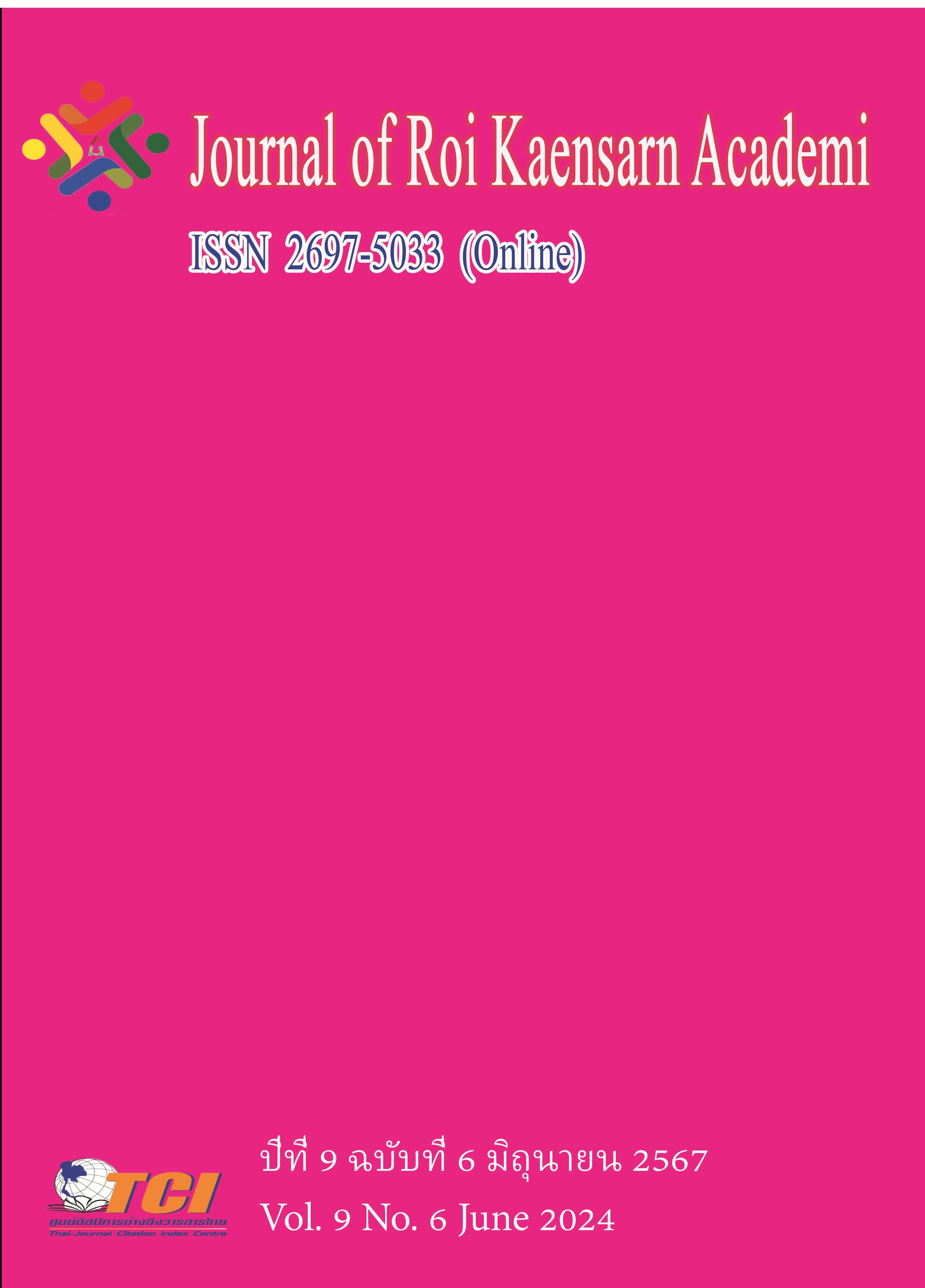ปัจจัยที่เป็นสาเหตุของการรุกล้ำทางวิ่ง และแนวทางการป้องกัน การเกิดอุบัติเหตุทางการบิน
Main Article Content
บทคัดย่อ
การรุกล้ำทางวิ่ง (Runway Incursion) เป็นอุบัติเหตุทางการบินที่ก่อให้เกิดความเสียหายอย่างมากทั้งต่อชีวิต ทรัพย์สินรวมทั้งชื่อเสียงของสายการบิน Global Action Plan for the Prevention of Runway Incursions. (2023) กล่าวว่า โครงสร้าง และสิ่งอำนวยความสะดวกต่าง ๆของสนามบินควรจะมีการออกแบบเพื่อลดความเสี่ยงในการเกิดการรุกล้ำทางวิ่ง โครงสร้าง และสิ่งอำนวยความสะดวกของสนามบินที่ออกแบบไม่ดี จะทำให้การเกิดการรุกล้ำทางวิ่งมีจำนวน และความรุนแรงมากขึ้น
วัตถุประสงค์ เพื่อศึกษาปัจจัยที่เป็นสาเหตุของการรุกล้ำทางวิ่ง และการป้องกันอุบัติเหตุทางการบิน พบว่า ปัจจัยการเกิดอุบัติเหตุการรุกล้ำทางวิ่ง (Runway Incursion) ได้แก่ 1.สภาพอากาศ (Weather) 2.การออกแบบสนามบิน (Aerodrome design) 3.การใช้คำมาตรฐานในการสื่อสารทางการบิน (Phraseology) 4.ภาระงาน (Workload) 5.การถูกเบี่ยงเบนความสนใจ (Distraction) และแนวทางป้องกันการเกิดการรุกล้ำทางวิ่ง ได้แก่ 1.การจัดการความปลอดภัย และการสนับสนุนทีมความปลอดภัยของสนามบิน 2.การฝึกอบรม 3.การตรวจสอบทางวิ่ง 4.โครงสร้างและสิ่งอำนวยความสะดวกของสนามบินที่สนับสนุนความปลอดภัยในการเดินอากาศ 5.ส่งเสริมการปฏิบัติการความปลอดภัยของทางวิ่ง 6.การติดต่อสื่อสารเกี่ยวกับการปฏิบัติการความปลอดภัยของทางวิ่ง 7.ข้อมูลข่าวสารการบิน 8.การใช้เทคโนโลยีในการปฏิบัติการความปลอดภัยบนทางวิ่ง 9.การปฎิบัติการภาคพื้น 10.การจัดการภาระงาน และการตรวจสอบ
Article Details
เอกสารอ้างอิง
กองเศรษฐกิจการบิน ฝ่ายพัฒนาและส่งเสริมกิจการการบินพลเรือน. (2566). สถิติการขนส่งทางอากาศไตรมาสที่ 4 ประจำปี 2566. กรุงเทพมหานคร: สำนักงานการบินพลเรือนแห่งประเทศไทย.
ประกาศกระทรวงคมนาคม. (2561). อุบัติเหตุที่ต้องดำเนินการตามกฎหมายว่าด้วยการเดินอากาศ.กรุงเทพมหานคร: กระทรวงคมนาคม.
พระราชบัญญัติการเดินอากาศ. (2562). ราชกิจจานุเบกษา, 2562 (136), 58.
Biembaum L. & Hagermann G. (2012). Runway Incursion Severity Risk Analysis.
Blom, H. A., Stroeve, S. H., Scholte, J. J., & de Jong, H. H. (2008). Accident risk analysis benchmaking Monte Carlo simulation versus event sequences. Proc. ICRAT, Fairfax, VA, 177-184.
Chang Y. & Wong K. (2012). Human risk factors associated with runway incursions. Journal of Air Transport Management., 24, 25-30.
Claros B., Sun C., & Edara P. (2017). Enhancing Safety Risk Management with Quantitative Measures Transportation Research Record: Journal of the Transportation Research board, 2603 (1), 1-12.
Divya Bhargava. (2021). Learning Lessons from Incidents to Improve Runway Safety : What Helps Controllers Create Information Rich Report That Improve Our Knowledge of Runway Incursions and Their Causes?. : West Lafayette Indiana.
FAA. (2010). FAA Airport (ARP) Safety Management System. U.S.A: Office of Primary Responsibility AAS-300, Office of Airport Safety and Operations - Airport Safety & Operations Division.
FAA. (2012). Runway Safety Report 2011-2012. Online. Retrieved January 4 2023. from https://www.faa.gov/airports/runway_safety/statistics/year/?fy1=2012&fy2=2011.
Galle, K. M., J. C., Hossain, M. M., Moliterno, M. J., Rowell, M. K., & Revenko, N. V. (2010). Risk - based airport selection for runway safety assessments through the development and application of system-driven prioritization methodologies. Proceeding of the 2010 IEEE Systems and Information Engineering Design Symposium 2010.
Goodheart, B. J. (2018). Identification of Causal Paths and Prediction of Runway Incursion Risk by Means of Bayesian Belief Networks. Transportation Research Record: Journal of the Transportation Research board, 2400 (1), 9-20.
H.B. Koopmans. (2019). An exploration on the relationship between airport characteristics Eni and the occurrence of runway incursions.: University of Twente.
ICAO. (2013). Safety Management Manual (SMM). . Online. Retrieved January 4 2023. from https://www.icao.int/SAM/Documents/2017-SSPGUY/Doc%209859%20SMM%20 Third%20edition%20en.pdf.
ICAO. (2023). Global Action Plan for the Prevention of Runway Incursions. Johnson, M. E.,
Zhao, X., Faulkner, B., Young, J. P., (2016). Statistics Models of Runway Incursion Based on Runway Intersections and Taxiways. Journal of Aviation Technology and Engineering, 5 (2).
Mathew, J. K., Major, W. L.,Hubbard, S. M., & Bullock, D.M. (2017). Statistical modelling of runway incursion occurrences in the United States. Journal of Air Transport Management, 65, 54-62.
Mrazova, M. (2014). Runway Incursions-clear and constant danger. INCAS BULLETIN, 6 (3), 71-80.
Luigi Russo. (2021). Analysis of an Aeronautical Database and Correlation with Single Pilot Operations. Turin : Politecnico Di Torino.
Rogerson, E. C., & Lambert, J. H. (2012). Prioritizing risks via several expert perspective with application to runway safety. Reliability Engineering & System Safety, 103, 22-34.
Wike, S., Majumdar, A., & Ochieng, W. Y. (2015). Modelling runway incursion severity. Accid Anal Prev,79, 88-99.

